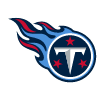2021 NFL season: Projecting the most improved player on each AFC team
Each offseason gives NFL teams a chance to adjust and craft new strategies, with those changes often helping to create opportunities for certain players to increase their production in the upcoming campaign. Using my forward-looking data models, I’ve identified one player from each NFL team who projects to see such an uptick in 2021 based on their performance trajectory and the scheme they’ll be playing in this season.
Below, I’ve included a note on one player from each AFC team (listed in alphabetical order) that helps explain why these guys forecast to grow as contributors.
Training camp is finally here! Be sure to check out NFL Network’s extensive live coverage, including Inside Training Camp every day and highlighted by Training Camp: Back Together Saturday Fueled by Gatorade on July 31.
I considered including Clark in my list of the AFC’s most underappreciated players earlier this offseason, but I saved him for this article, because his trajectory has been upward since he entered the league as a sixth-rounder in 2017. Clark’s 10 QB pressures in 2020 ranked third among defensive backs in the NFL, per Next Gen Stats, and my computer vision shows that his change-of-direction speed eroded the second-least among safeties from the first quarter through the fourth (my proxy for fatigue).
Related Links
- 2021 NFL season: Quinnen Williams, Daniel Jones among top 10 candidates to make the leap
- 2021 NFL season: One potential first-time Pro Bowler from each AFC team
- AFC South training camp preview: Will Julio Jones, Carson Wentz lift new teams? Trevor Lawrence hype!
- State of the 2021 Los Angeles Chargers: Can Brandon Staley lift talented roster into NFL playoffs?
- 2021 NFL Superstar Club: Josh Allen breaks in; Big Ben bumped
- 2021 NFL season: One storyline to track for all 32 teams
Next Gen Stats show that Moss averaged 4.0 yards per rush on runs between the tackles last season and 4.5 yards on attempts outside the tackles. For comparison’s sake, Devin Singletary averaged 3.1 yards per rush inside and 5.2 outside. Prior to his ankle injury in the Wild Card Round, Moss’ workload had been steadily increasing while his production stayed at a high level. Buffalo is blessed with a ton of continuity on offense, including coordinator Brian Daboll still pulling the strings, and it’s likely that familiarity will lead to even more opportunities for Moss in his sophomore campaign. Why? Because even a small increase in rushing production will help keep Josh Allen from being under pressure and should decrease the chances for turnovers and/or negative plays.
You know what helps drive a breakout season for an emerging wide receiver? A) Improved QB play; B) having another top wideout on the team who will command defensive attention; and C) having a defense with efficiency questions. Higgins checks all of those boxes, with Joe Burrow’s return from injury, the addition of stud rookie Ja’Marr Chase and the defense’s remaining question marks on all three levels. On deep targets (20-plus air yards) last season, Higgins led the Bengals with nine receptions and 291 yards. And his 135 go routes were the highest figure by any Bengal on any route, per NGS.
Of all of my AFC picks, Delpit is the biggest true projection. The 2020 second-rounder missed his entire rookie season after tearing his Achilles in training camp. However, safeties who are as versatile as Delpit was at LSU have really high ceilings in the NFL. Compound that with a big increase in overall defensive back potential after the team signed S John Johnson in free agency and drafted CB Greg Newsome II 26th overall, and the situation Delpit returns to appears pretty optimal. In three seasons at LSU, Delpit had eight interceptions and seven sacks. His potential use in blitz packages also differentiates him.
One of my favorite notes on Jeudy is his burst speed: His first 3 yards traveled off the line of scrimmage ranked seventh-fastest in the NFL last season, as measured by my computer vision. NGS shows that he only aligned wide on 40.9 percent of plays in Weeks 1-8, but that number skyrocketed to 89.2 percent in Weeks 9-17. In the wide alignment, he averaged 18.6 yards per reception and scored three touchdowns. Compare that to 12 yards per reception and zero scores from the slot. With Courtland Sutton’s return and improved play from the QB position, Jeudy’s burst and route-running potential forecast to increase dramatically, especially when running routes from the wide alignment.
With Lovie Smith taking over the defense, the Texans are set to play a Tampa 2 scheme, which is a really nice fit for Reid’s skill set. The safety’s utility in coverage was down last year compared to seasons prior. Smith’s architecture should give him the opportunity to produce at a level that exceeds even his 2018 and ’19 coverage efforts, which were graded nicely by Pro Football Focus.
With Frank Reich as his offensive coordinator back in 2017, Wentz had a +9.7 completion percentage over expected on third down — the highest mark in the NFL, per Next Gen Stats. To be honest, there are a slew of awesome stats from Wentz’s time with Reich in Philly, but I like that one because I hadn’t seen it before. My expectation is that Wentz will end up being QB16 by win share, which would be a big rebound from his disastrous 2020 campaign. Indianapolis is a team that projects to rely on the run and a strong O-line, meaning Wentz won’t have to produce at an all-world level for the Colts to enjoy success.
Last season, Shenault caught 52.2 percent of the passes of 10-plus air yards that were thrown his way — that figure led the Jags, according to Next Gen Stats (min. 20 such targets). I like that note, but what really flags for success here is this playmaker’s versatility. Last season, Shenault lined up out wide for 370 snaps, in the slot for 140, in the backfield for 27 and tight for 22 (NGS). Urban Meyer’s planning for Trevor Lawrence and this offense will likely include many of the creative principles we’ve seen the coach employ in the college ranks. Shenault’s past usage from such a range of alignments strategically jibes with Meyer’s play-calling.
Last season, CEH faced a light box (i.e., fewer than seven defenders) on 58.6 percent of attempts. I note this because it highlights how much defenses respect the pass when facing the Chiefs. Combine that with a revamped O-line, and the situation becomes better for Edwards-Helaire in his sophomore campaign. In the first 20 offensive plays (a proxy for the scripted part of the offense), no team uses more of the field horizontally or vertically, as measured by computer vision. This means more space for defenses to cover — and for CEH to exploit. Given Andy Reid’s play-calling history, it’s very likely the running back’s impact will be much greater in his second pro season.
Demonstrated perimeter speed and an increase in opportunity drive Ruggs’ potential to take a big step forward in 2021. Both of Ruggs’ 2020 touchdowns came off deep passes, an area in which he caught five of 14 passes for 245 yards (NGS). When targeted, Ruggs’ route running became more precise on longer routes (I tracked timing per route and separation) as the 2020 season progressed, which is a clue that he should continue to improve in 2021. Off the ball, Ruggs will continue to draw defenders to him and create space for others.
This one feels like cheating, but the faux rules of this article allow Herbert to qualify, so I’ll take it. At this time last season, we didn’t know when Herbert would start, and there were questions about how he’d fare under pressure. His response? A cool 1,113 passing yards and nine touchdowns under pressure, both of which led the NFL (NGS). Herbert’s ability to produce under pressure is a strong signal for this season’s potential, and drives his value as QB11 right now. (Note: This could — and likely will — change as camp and preseason evolve the roster and playbook. A new coach means new plays, so look out for fantasy info in mid-to-late August.)
Gesicki was my pick for the Dolphins in this space last year, and I’m doubling down here. Just two other tight ends earned more receiving yards from the slot in Weeks 11-17 last season than Gesicki’s 269: Pro Bowlers Travis Kelce (341) and Darren Waller (280). In fact, Gesicki’s slot production accounted for 81 percent of his total receiving yards during that stretch. Miami added speed on the perimeter and increased its pass-catching potential this offseason via Will Fuller (free agency) and Jaylen Waddle (No. 6 overall pick). Speed to spread out defenses combined with a prolific slot threat usually yields the separation needed for lots of first downs and touchdowns. Just ask the Chiefs. I’m not saying Gesicki is the next Kelce just yet, but the 25-year-old’s slot production potential is primed for disproportionate gains.
Retooling the offensive side of the ball was a major — and uncharacteristic — strategy taken by the Pats this offseason, which gives us some clues regarding what to expect from the team in 2021. Agholor, who joins Kendrick Bourne, Jonnu Smith and Hunter Henry among the Pats’ new pass catchers, adds a deep-ball element the team sorely lacked last season. Case in point: The 2020 Patriots averaged the second-closest distance to the line of scrimmage on non-red-zone plays at the time a pass was released, per computer vision. Agholor, meanwhile, averaged 15.3 air yards per target (fifth-most in the NFL) and hauled in six TD catches on deep targets (second-most) with the Raiders in 2020, per NGS. The seventh-year pro forecasts to play a major role in the New England’s revamped passing attack.
Williams already took a solid leap in Year 2, earning the respect of opposing offenses who double-teamed the defensive tackle at the sixth-highest rate among interior defenders in 2020, per computer vision. Much of that jump happened in the second half of the season, when his pressure percentage ballooned to 11.5 percent (Weeks 7-15) from 6.5 percent (Weeks 1-6), according to Next Gen Stats. Between Robert Saleh’s tutelage and the offseason additions of Carl Lawson and Sheldon Rankins — who both will command attention and create more space for Williams to operate — we should see the former No. 3 overall pick take yet another major step in his third season.
In his rookie season of 2019, Bush’s impact in coverage was almost immediate. Computer vision shows he was able to limit catches and yards after the catch at the fifth-best rate that year, and that he started entering this high level of production about two games in. (The average for off-ball linebackers drafted in the first three rounds since 2005 is about five games before they are consistent and we can determine “who they are” with any statistical relevance.) Given the changes to the Steelers’ defense this offseason, it seems more will be asked of Bush in his return to the field after missing 11 games in 2020. And there are great indicators that he will be able to deliver.
Opportunity drives this selection. Firkser’s 9.1 percent catch rate over expected last season ranked second-highest in the league among tight ends (per NGS, min. 40 targets). Not to mention, the guy didn’t drop a single pass. His run-blocking and pass-blocking production have dramatically increased over the past two seasons, fueling a very important win-share uptick and giving him big-time breakthrough potential.
Follow Cynthia Frelund on Twitter.
Source: Read Full Article
































